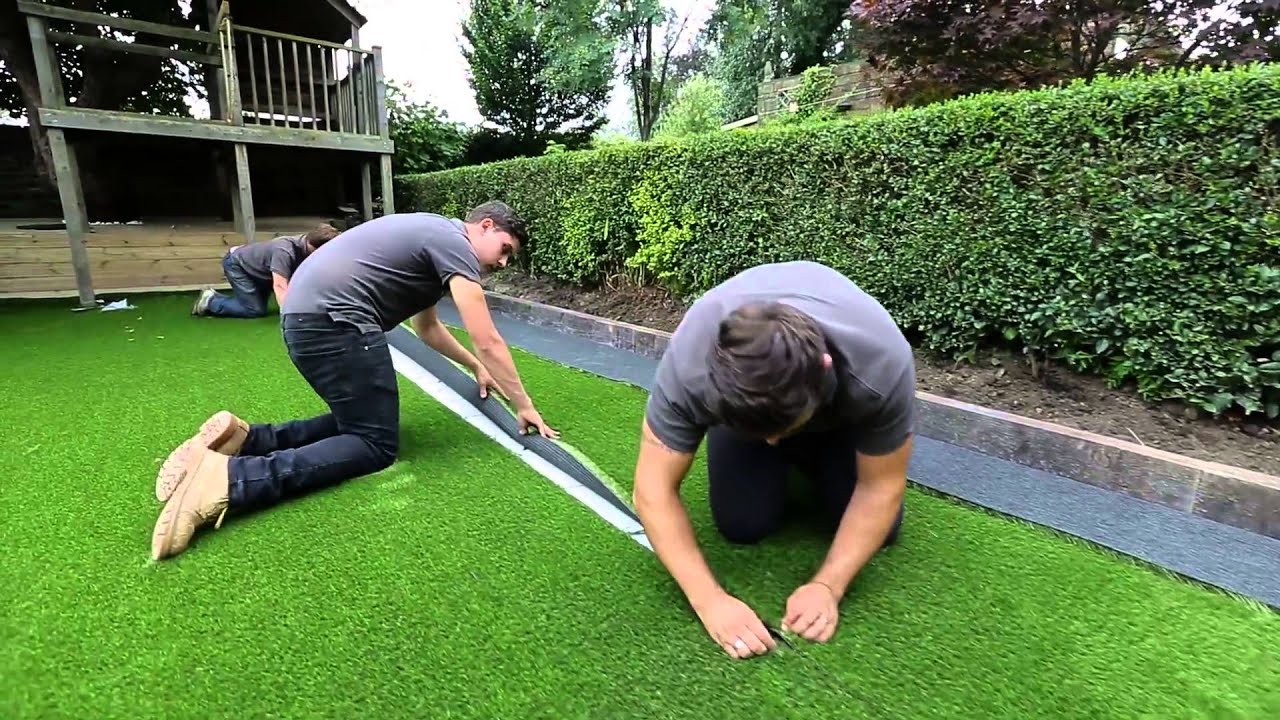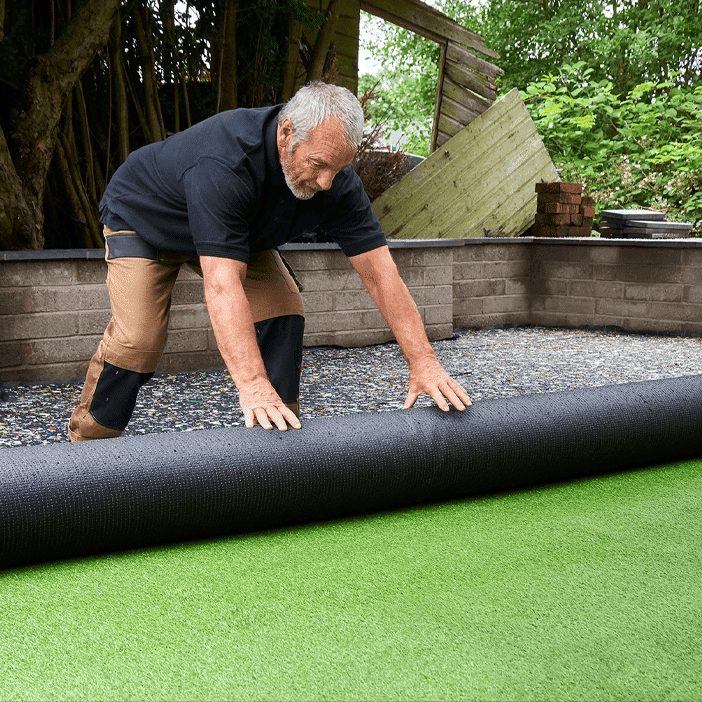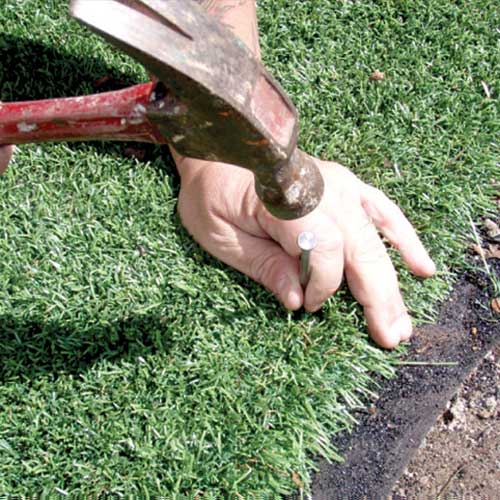Delve Into the Environmental Benefits of Opting for Synthetic Grass Solutions
The fostering of synthetic grass services presents an engaging chance to deal with pressing ecological obstacles. By dramatically lowering water use and reducing the application of damaging chemicals, these alternatives not just advertise sustainable landscaping yet likewise safeguard local ecosystems. The lower carbon impact linked with reduced maintenance tasks contributes to a much more sustainable strategy to land administration. The ramifications of these benefits expand beyond mere preservation initiatives, increasing inquiries regarding their lasting influence on environment conservation and overall environmental equilibrium. Exploring these measurements discloses a complex interaction worth considering.
Water Conservation Perks
Among the most considerable benefits of synthetic grass is its ability to preserve water. Traditional turf lawns call for substantial irrigation, particularly in locations prone to dry spell or water limitations. In contrast, synthetic grass does not need watering, significantly decreasing the overall need for water sources. This function is especially beneficial in deserts where water scarcity is a pushing worry.
By eliminating the requirement for regular watering, synthetic grass contributes to sustainable landscape practices and assists alleviate the environmental influence of extreme water consumption. Moreover, the conservation of water reaches the reduction of runoff, which can bring about soil disintegration and river air pollution.
Furthermore, the setup of man-made lawn permits communities and home owners to allocate water resources much more effectively, concentrating on important usages such as drinking water and agriculture. The shift towards artificial grass not only promotes responsible water usage but likewise aligns with broader environmental goals aimed at protecting natural deposits.
As neighborhoods progressively focus on sustainability, the water conservation advantages of synthetic grass offer a compelling instance for its adoption in industrial and domestic landscaping jobs.
Minimized Chemical Usage
The change to synthetic grass dramatically lowers the reliance on chemical therapies frequently made use of in all-natural turf maintenance. Standard lawn management generally entails the application of herbicides, plant foods, and chemicals to promote development and control insects. These chemicals can present risks to human health and wellness, regional wildlife, and the setting, adding to dirt and water contamination.
On the other hand, artificial turf removes the demand for these unsafe substances. Once installed, it needs marginal upkeep, mostly containing regular cleansing and occasional infill replenishment. This decrease in chemical usage not only benefits the immediate atmosphere but additionally adds to wider ecological stability. By decreasing the release of synthetic substances right into the community, synthetic grass promotes healthier soil and water supply.
Additionally, the lack of chemical drainage related to synthetic lawn setups aids secure neighborhood waterways from contamination, supporting aquatic life and maintaining biodiversity. Turf installation phoenix az. As communities increasingly prioritize sustainable techniques, deciding for synthetic grass offers a practical option that straightens with ecological preservation goals. Through this change, residential property proprietors can enjoy lush green rooms without compromising eco-friendly health and wellness, leading the way for an extra lasting future
Lower Carbon Footprint

Furthermore, the setup of synthetic grass can result in considerable water conservation. Natural yards require considerable quantities of water for irrigation, which not just includes to the carbon footprint connected with water removal and therapy however likewise stress local water resources. On the other hand, fabricated turf requires very little upkeep, needing no watering, thereby considerably decreasing water usage and its linked power costs.
In addition, the durability of fabricated lawn adds to its decreased carbon impact. With a lifespan of as much as 15 years or more, the demand for frequent replacements is lessened, causing much less waste and lower energy intake in production and throwing away traditional lawn options. Overall, synthetic grass presents a lasting alternative for environmentally aware landscape design.
Environment Preservation
Environment conservation is an essential factor to consider in the discussion over landscaping choices, specifically when contrasting synthetic grass to natural yard. All-natural yard lawns usually call for substantial upkeep, including the use of fertilizers, herbicides, and pesticides, which can negatively impact local environments. These chemicals can seep into the dirt and waterways, harming indigenous plants and fauna and interfering with local environments.
In comparison, fabricated grass presents an opportunity to reduce the ecological footprint of landscape design. By choosing artificial turf, house owners can minimize the disruption of natural environments linked with standard grass treatment techniques. Synthetic grass gets rid of the requirement for unsafe chemicals, thus safeguarding neighboring wildlife and preserving the integrity of surrounding communities. The installment of man-made lawn can lead to the conversion of former grass areas right into even more biodiverse landscapes, such as pollinator yards or indigenous plant areas, which can sustain neighborhood wild animals.
Inevitably, the change to synthetic grass not just saves water and decreases maintenance efforts yet additionally cultivates an extra harmonious connection in between human tasks and the native environment, promoting environment conservation while doing so.
Long-Term Sustainability
Long-lasting sustainability is a critical consider evaluating the benefits of synthetic grass over conventional lawn yards. One of the most considerable advantages of synthetic grass is its durability; it can last up to 15-20 years with marginal maintenance, whereas all-natural turf requires frequent reseeding and replacement. This durability minimizes the need for consistent sources, such as water, plant foods, and pesticides, which are crucial for keeping a healthy and balanced turf lawn.
Furthermore, fabricated lawn contributes to a decrease in carbon emissions connected with lawn treatment tools. Conventional lawns commonly require gas-powered mowers, leaners, and blowers, all of which add to air contamination. Phoenix turf companies. On the other hand, synthetic grass eliminates the need for such devices, promoting a cleaner atmosphere
In addition, the production of synthetic grass increasingly makes use of recycled products, enhancing its sustainability profile. As makers embrace green techniques, the More Help ecological impact of man-made grass remains to decrease.

Verdict
The fostering of man-made turf services presents substantial ecological benefits, including considerable water conservation, reduced reliance on damaging chemicals, and a reduced carbon footprint. Additionally, synthetic grass aids in preserving natural environments by minimizing land disturbance and promoting long-term sustainability with using long lasting products. Jointly, these variables underscore the capacity of fabricated lawn to contribute positively to ecological wellness and supply a practical alternative to conventional landscape design methods in a progressively resource-conscious world.
In comparison, synthetic lawn does not need watering, considerably visit this page lowering the total demand for water sources. By minimizing the release of artificial substances right into the community, man-made turf promotes much healthier soil and water systems.
Moreover, the installment of artificial turf can result in considerable water conservation. In contrast, man-made turf needs minimal maintenance, requiring no watering, consequently dramatically decreasing water usage and its linked power prices.
